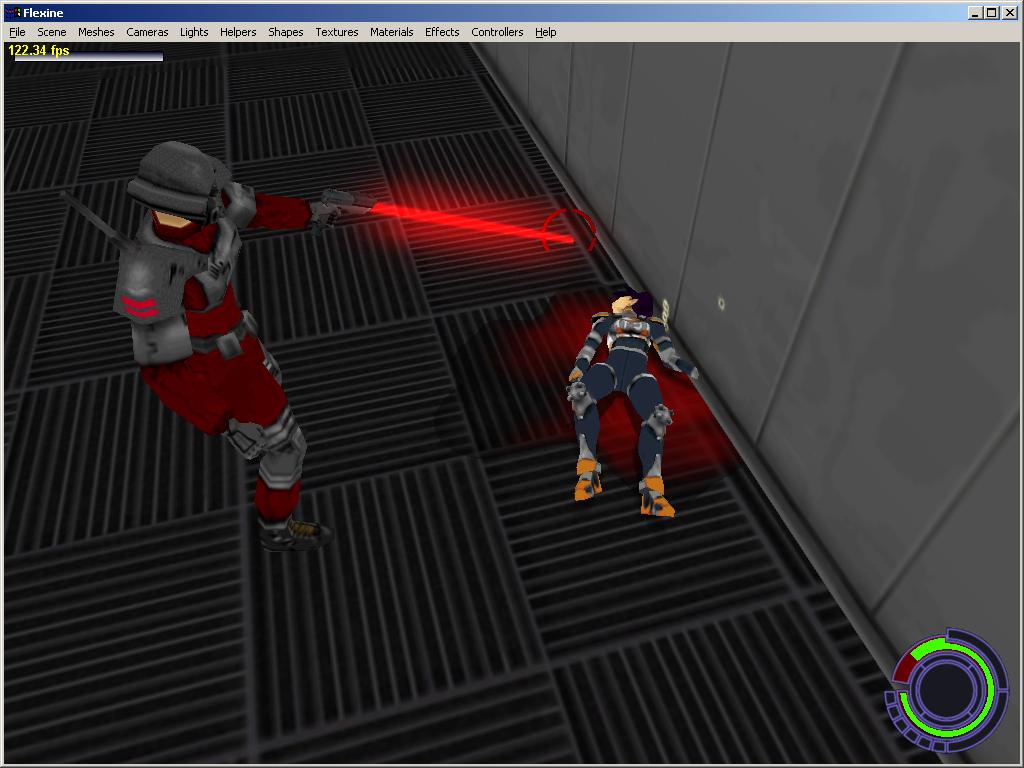“Konoko Payne” update
Saturday, February 23rd, 2008Uploaded a new Konoko Payne version. Nothing really new here, just bug-fixes, “new” characters (Elite Striker, Ninja…), fixed motion scripts, an automatic camera for the demo-mode, etc. The previously mentioned “blood puddles” are in there, but it’s otherwise basically the same as last time, slightly improved. I just don’t have any time to work on a real “game” with a proper scenario, cutscenes, different levels, nice level design, etc. Or voice acting. Some guy once sent me an email complaining about the MGS2-like dialogs in KP, saying that “it would be better with recorded voices”. Yeah, right. What about this: I hire Amanda Winn-Lee and you pay the bill. Deal?
I’m considering dropping all the commercial libraries used out there (mainly Novodex & Pathengine) to make a proper open source project, but even this takes forever. I don’t know any good open source pathfinding library to replace Pathengine, so I’m kind of stuck here. I could re-implement it myself using John Ratcliff’s AI Wisdom 4 article, but I admit I’m not very motivated for this. It’s always painful to re-do something that already works, it doesn’t feel like making progress. On the other hand, the whole KP project doesn’t evolve very quickly anyway, and an open source version could boost this. Or ruin it completely.
I think I’m reaching a point where I can’t make that project a lot better just by myself. The code is pretty much “done”. Sure the AI could be improved, things could be more polished and more optimized, but the hand-to-hand combat, gun fights, character control, etc, everything’s working well and feels good. Despite this, I have an insanely long “TODO” list for Konoko Payne. Let me check… 93 Kbytes! It’s a vanilla ASCII text file with something like one task per line, and ~2000 lines. So that’s ~2000 things to do. If I do one thing per day, I’d need 2000/365 = 5.47 years to complete the project. This is so depressing. In comparison, I have another “DONE” file listing the things already implemented. I move the tasks from the TODO file to the the DONE file when they’re done. Today the DONE file is 62 KBytes and a little bit more than 1000 lines. Not bad for a hobby project.
Anyway. Better, later.
